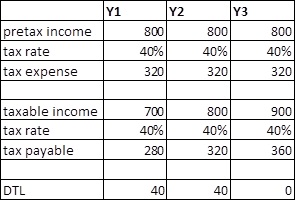
He grew the business to 31 stores at its height, sold it in 2016, and then relocated to the US. Now he works as a growth coach, helping restaurant owners expand their businesses. It should be reviewed, assessed, and updated on (at least) a quarterly basis to see how things are going.
Overall, the master budget provides a comprehensive overview of ABC Manufacturing Company’s financial plan for the upcoming year and serves as a roadmap for achieving its financial goals and objectives. By using the master budget as a guide, the company can make informed financial decisions that will help it succeed in a competitive marketplace. Senior management should also review the budget to ensure it is realistic and achievable.
Why is a master budget important?
Comparisons of budgeted and actual result and subsequent evaluation of performance also introduce difficulties. In ideal circumstances managers use actual results to evaluate their own performance, to evaluate the performance of other, and to correct elements of operations that seem to be out of control. The budget serves as a feedback device; it lets managers know the result of their actions. The master budget provides a method for evaluating and subsequently controlling performance. Performance evaluation and control is a very powerful and very controversial aspect of budgeting.
This information can help businesses identify potential risks, such as decreased sales, increased production costs, or economic downturns. Identifying these risks can help businesses develop contingency plans to mitigate the impact of these events. Preparing a master budget requires developing accurate revenue, expense, and cash flow forecasts based on historical data and market trends. The finance team needs to be able to identify potential risks and opportunities and create contingency plans to mitigate risks and capitalize on opportunities.

This can help businesses make more informed decisions and avoid potential financial pitfalls. The overhead budget includes fixed and variable expenses, such as office rent, utilities, and business insurance. It covers indirect expenses that cannot be directly traced to a product or service. The overhead budget is essential for managing indirect expenses, optimizing cost structures, and achieving profit margins. Annual updates are suitable for small businesses with a simple financial planning cycle, such as those with one product or service.
What Are Some Common Mistakes Businesses Make When Creating a Master Budget?
In conclusion, a master budget is a crucial tool businesses use to manage their finances effectively. It enables them to plan and allocate resources, make informed decisions, and achieve financial objectives. A well-prepared master budget is accurate and aligns with the business’s strategic goals and values. The production budget is a plan for the number of new products or services a business aims to manufacture. It is based on the sales forecast and considers the inventory levels, production capacity, and production efficiency. The production budget is essential for managing inventory levels, determining production costs, and achieving sales targets.
In contrast, understaffing (hiring too few workers) lets the employees work overtime or even forces the company bankrupt because of not responding enough to requests from customers (Holtzman, 2019). Each of these individual budgets contributes to the master budget, providing a comprehensive overview of ABC Manufacturing’s financial and operational plans for the upcoming fiscal year. This way, the company can ensure all departments are aligned and working toward the same objectives. The operating budget consists of projected sales revenue, the cost of goods sold, and all the separate operating expense budgets you’ll be creating.
How a Master Budget Works
The sales manager will be reluctant to authorize the visit if it will result in exceeding the travel budget. The planning process encourages management to consider alternatives that might improve customer value and reduce costs.. The financial plan and subsequent financial performance measurements reflect the financial expectations and consequences of those efforts. The budget committee should develop the master budget annually with a guide from the budget director (Carlson, 2020).
Creating the smaller budgets using a standard budget format makes the creation of the Master budget simpler and more accurate. Retained earnings at the end of last year totaled $56,180, and no cash dividends are anticipated for the budget period ending December 31. The company expects to collect 70 percent of sales in the quarter of sale, 25 percent of sales in the quarter following the sale, and 5 percent will not be collected (bad debt). Accounts receivable at the end of last year totaled $200,000, all of which will be collected in the first quarter of this coming year.
- Once completed, these smaller budgets are rolled up into a budgeted income statement format, while the financial budget consists of a projected balance sheet and statement of cash flow.
- A well-prepared master budget is accurate and aligns with the business’s strategic goals and values.
- The dollar amounts for ending direct materials and finished goods are needed for the balance sheet.
- Second, they must have excellent analytical skills to analyze financial data and make informed decisions based on the available information.
- For example, changes in the market, regulatory environment, or competition can affect the business’s revenue, expenses, and cash flow.
It helps businesses plan their cash flow and ensures they have enough cash to cover their expenses. This is particularly important during times of crisis, when businesses may experience cash flow disruptions. Because long-term asset purchases occur at the end of the year, depreciation will begin the following year. Thus depreciation shown in the manufacturing overhead and selling and administrative budgets will not be affected until the following year. The cash outlay required to make these purchases is reflected in the cash budget presented next.
What is a Master Budget?
This allows enough time to gather relevant financial data, analyze historical trends, and make informed decisions about the budget’s revenue and expense forecasts. The master budget is the aggregation of all lower-level budgets produced by a company’s various functional areas, and also includes budgeted financial statements, a cash forecast, and a financing plan. The master budget is typically presented in either a monthly or quarterly format, and usually covers a company’s entire fiscal year.
6 Types of Budgets Every Small-Business Owner Should Know – Software Advice
6 Types of Budgets Every Small-Business Owner Should Know.
Posted: Mon, 21 Aug 2023 10:47:53 GMT [source]
The CFO should then ensure that department heads are aligned on each other’s functional goals, and that all goals support the company’s main high-level direction for the year. If you want to get funding for your business, lenders will ask to see your financial statements. They are needed because it is believed and assured that the systems will help organizations make better collective operating and financial decisions. Budgets, among other things, force planning, serve to improve communication and coordination, allocates scarce recourses and used to evaluate performance. The cost of materials used is needed in the cost of goods sold budget below. Behavioral problems do not arise solely because of the procedure followed for developing budget allowances.
Sections two and three include short, but important discussions of the purposes and benefits of budgeting and the limitations and problems involved in budgeting. The assumptions upon which the budget is based are briefly described in section four. The techniques used to prepare a master budget are discussed and illustrated in section five. To create a master budget, the finance department needs to have several skills.

Understanding its purpose, typical structure, and contents is the next step towards perfecting the budgeting process. This includes listening to their input and feedback and considering their perspectives. Stakeholder engagement ensures that businesses are responsive to stakeholder needs and concerns. Businesses make several common mistakes when creating their master budgets, leading to inaccurate or unrealistic financial projections. Here are some of the most common mistakes businesses make when creating a master budget and how to avoid them.
How are budgets developed?
The drawback to this approach to budgeting is that the budget is prepared by individuals who are not familiar with specific operations and expenses to understand each department’s nuances. One method of determining budgeted COGS involves accumulating the amounts from the previous sub-budgets as follows. The information needed to determine budgeted cash payments is provided by accounting, (accounts payable) and is usually based on past experience.
- Once you have that out of the way, you are ready to calculate projected sales.
- For example, the company will use the sales budget to set targets for revenue generation and adjust marketing and sales strategies as necessary to meet these targets.
- AI can also help businesses identify trends and patterns in financial data, making it easier to create more accurate budgets.
First, they need to understand financial statements, such as the income statement, balance sheet, and cash flow statement. These financial statements provide valuable information that is used to prepare the lower-level budgets and the master budget. First, it provides a holistic view of the organization’s financial activities, enabling managers and executives to make informed decisions based on the available financial resources. Second, it helps businesses align their financial goals with their strategic objectives. By preparing a master budget, businesses can determine their financial priorities and allocate resources accordingly. An example of how to use Excel to develop an operating budget for Jerry’s Ice Cream follows.

The budget is usually prepared on an annual basis, but can also be done on a quarterly or monthly basis. It mainly includes sales, production, capital, Office expense, budgeted cash flow statement, profit and loss statement, and budgeted statement of financial position, which is the entity’s balance sheet. Businesses that fail to account for cash flow when creating their master budget can quickly face financial difficulties. Still, if most of its revenue is tied up in accounts receivable, it may not have enough cash to cover its expenses.
It is common for senior management teams to review iterations to the master budget in a bid to incorporate various modifications to achieve desired results. As shown earlier, all other items in the master budget, including production, purchase, inventories, and expenses, depend on it in some way. Service giving companies, like, hotels forecast the number of rooms that will be occupied during various seasons. As noted earlier, the budgets set limits on cost incurrence, allowances beyond which managers are not expected to go. However, if managers’ view budgeted amounts as strict limits on spending, they may spend either too little or too much. Suppose a sales manager believes that a visit to several important customers or potential customers will result in greatly increased sales.